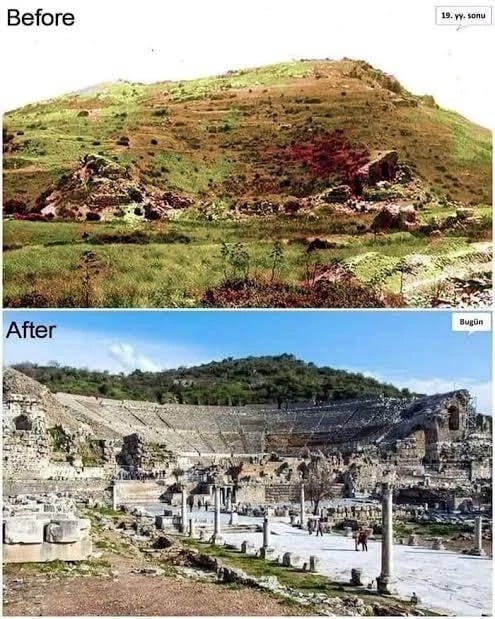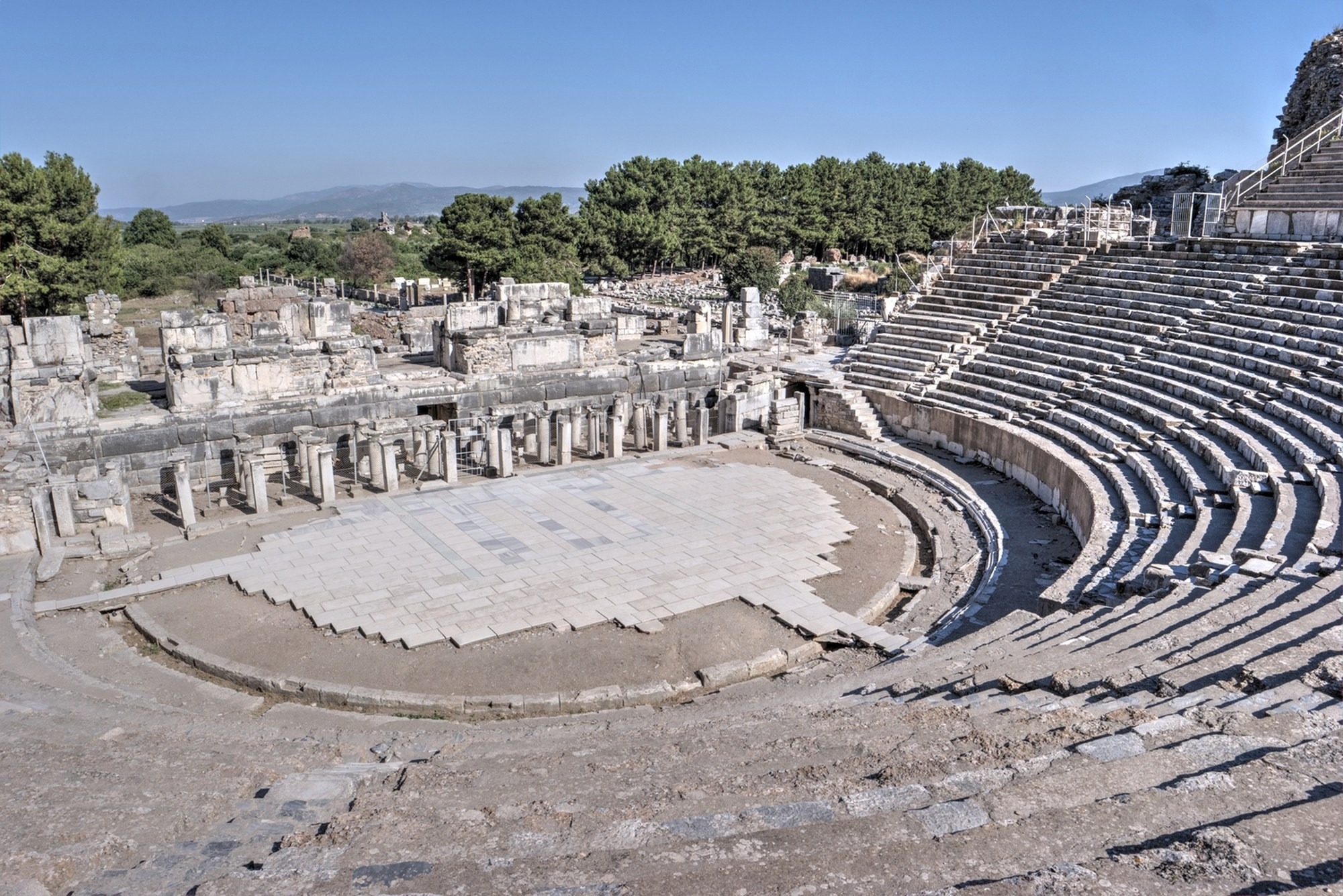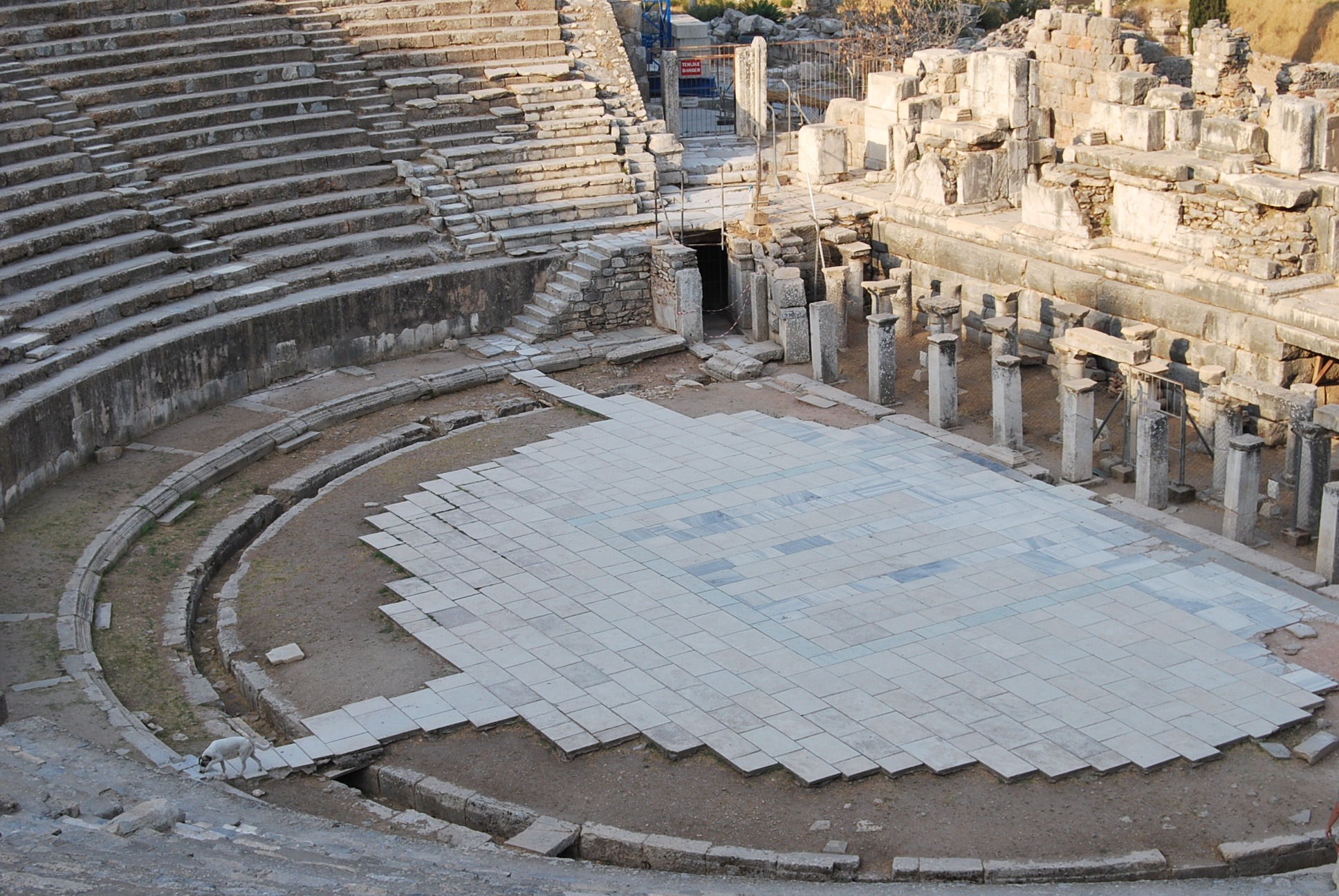2,300-Year-Old Grand Theater Of Ephesus: Site Of St. Paul’s Uproar In Biblical Times
The Grand Theater of Ephesus, often mistakenly called the Ephesus Amphitheater, is one of the most impressive ancient structures in the city of Ephesus.
The theater is located on the slopes of Panayir Hill and faces the Aegean Sea.
It is one of the best-preserved sites in Ephesus and continues to draw visitors from all over the world.

The construction of the Grand Theater of Ephesus
The theater was built during the Hellenistic period, around 250 BC, under the reign of Lysimachos.
It was built into the west slope of Mount Pion (Panayir).
Initially, the theater followed the typical Hellenistic style, utilizing the natural hillside gradient for seating arrangements.

However, significant changes occurred when the Romans took control of Ephesus in 133 BC.
After a major earthquake in 17 AD, the Romans renovated the theater extensively.
Emperor Claudius (41-54 AD) expanded the seating capacity.
Later, Emperor Nero (54-68 AD) added intricate statues and pillars.

The final major enhancements came under Emperor Septimus Severus in the late 2nd century AD, who added a third story, giving the theater its current grand appearance.
This blend of Hellenistic and Roman elements is why the theater is known for its Greco-Roman style.

Architectural Marvels
With seating for about 25,000 people, the Grand Theater of Ephesus is an engineering wonder.
The cavea, or seating area consists of 66 rows divided into three horizontal sections by walkways.
The theater spans 145 meters in width, and its stage building is 18 meters high.
The front rows were removed to expand the orchestra area, making it suitable for both performances and gladiatorial fights.

The theater’s design showcases the differences between Greek and Roman theaters.
Greek theaters were built into hillsides, while Roman theaters, like the Ephesus Theater after its renovations, had free-standing walls for support, allowing for greater architectural flexibility.

The Grand Theater Of Ephesus and St. Paul’s Uproar
The Grand Theater of Ephesus has been the site of many important events.
One notable incident involves St. Paul and a riot led by Demetrius the silversmith.
As described in the Acts of the Apostles (19:23-41), Demetrius incited a mob against Paul, fearing that Paul’s teachings would hurt the sale of Artemis statues.

The crowd gathered in the theater, chanting “Great is Artemis of the Ephesians!”
Although Paul wanted to speak to them, his followers persuaded him not to enter, and the riot forced him to leave the city.

The theater also hosted various cultural events, from plays to gladiator fights.
In modern times, it has been a venue for concerts by famous artists like Elton John, Sting, and Luciano Pavarotti.

Rediscovery and Restoration of the theater
The theater had been buried for centuries under layers of earth, it was first unearthed in the 1860s by British archaeologist John Turtle Wood, commissioned by the British Museum.

Systematic excavation and restoration began in 1895 under the Austrian Archaeological Institute.
Despite the challenges, archaeologists managed to restore the theater, revealing its ancient beauty.

Modern restoration efforts in the 1970s, 1990s, and early 21st century have preserved the theater further, allowing visitors to appreciate its details and size.


